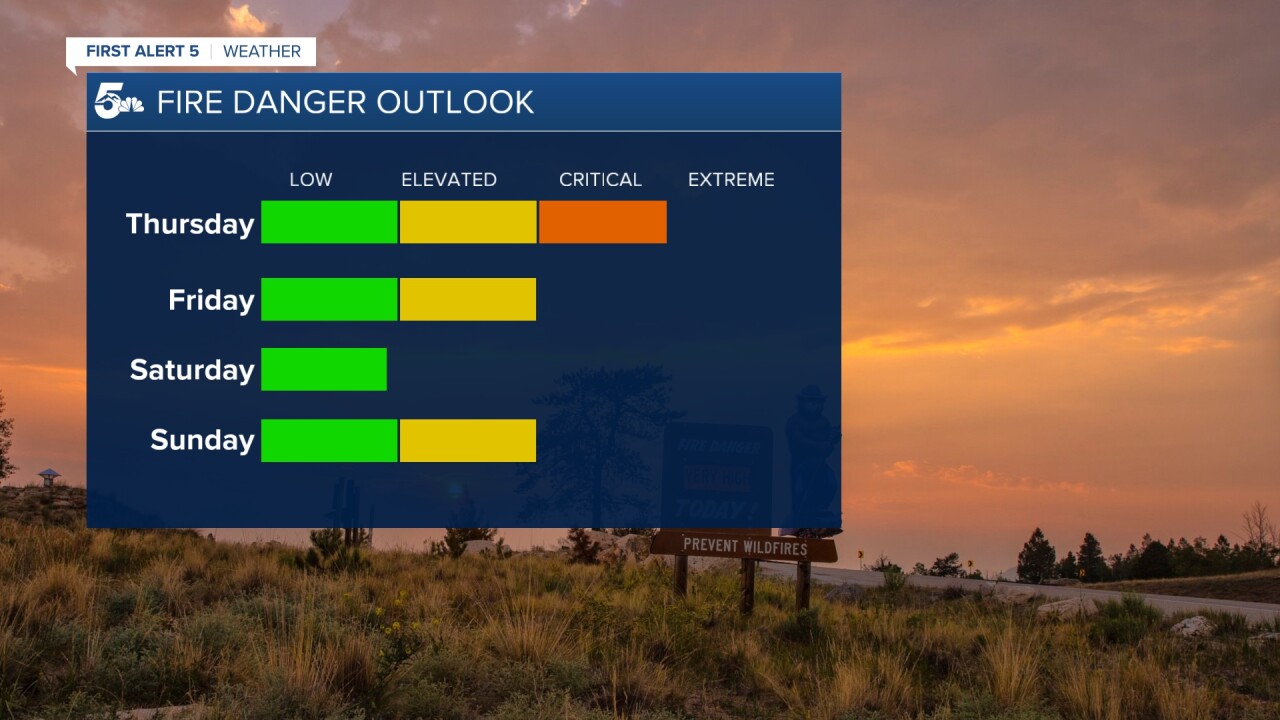This time of the year as we all know, can be one of our busiest with wildfires.
Based on the past 10 years of data for Southern Colorado, April is the month with the highest frequency of Red Flag Warning days.
Accordingly, some might say that April is the peak of our grass fire season.
This is because of an overabundance of dead, dry grasses.
After being dormant in the winter, dry grass will act as a fast-burning fuel for fires until the great green up occurs later this spring.
Forest fires on the other hand rely on larger fuels such as trees and heavy brush that dry out much slower.
Quick burning fuels that form grass fires usually only burn for hours or at most, a few days.
Forest fires can burn for weeks, even months.
Grass fires are highly susceptible to the element of wind, with forest fire threats including wind as well as terrain and topography.
Finally...grass fires can pretty much happen any time of the year.
Forest fires tend to be most active in the summer and fall months when seasonal snowpack has dissipated.

On windy and dry days like today...grasses, leaves and mulch can dry out super quick.
These are all known as "one hour fuels".
Given the right combination of warm, windy and dry weather, one hour fuels can quickly turn into burnable fuels.
This unfortunately can occur in spite of any recent rain or snowfall.

With Red Flag Warnings back again on Thursday, fire danger across Southern Colorado will be critical, borderline extreme in some areas.
Fire danger will be greatly reduced by Friday here in the Pikes Peak Region, but will still remain elevated in the southeast Plains.
We should finally see a break region-wide on Saturday before elevated fire danger returns Sunday.

As we inch closer to summer and our rainy season, grass fire activity tends to decrease, with the frequency of Red Flag Warning days lowest in July and August.
The other month with the lowest frequency of Red Flag Warnings comes on average in January.



